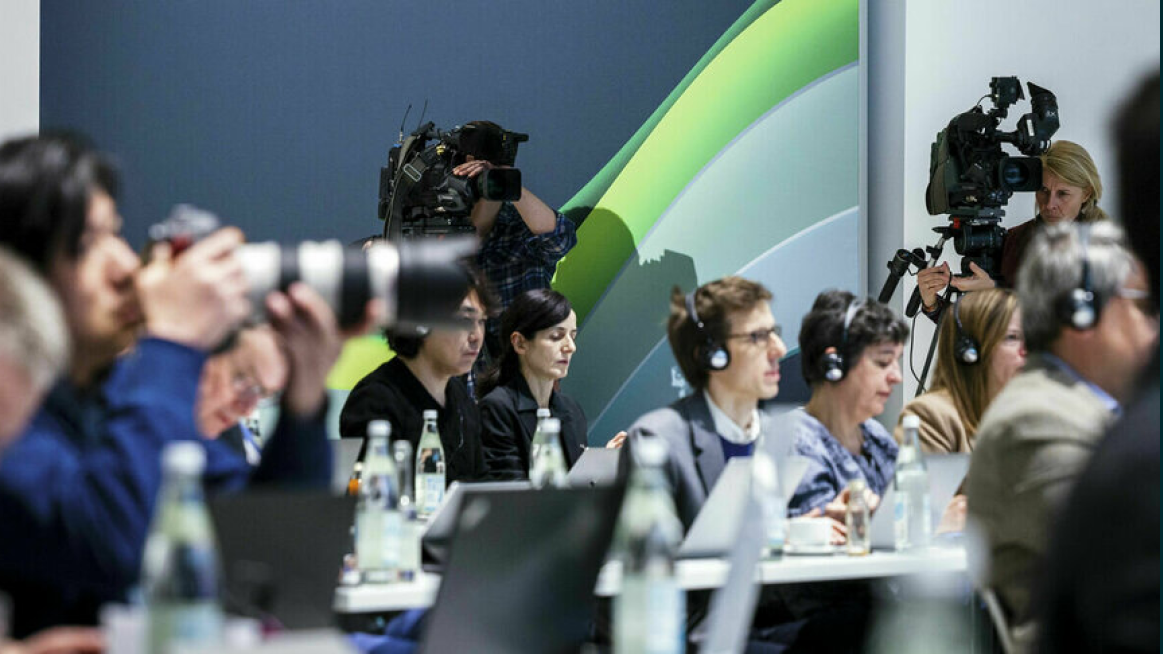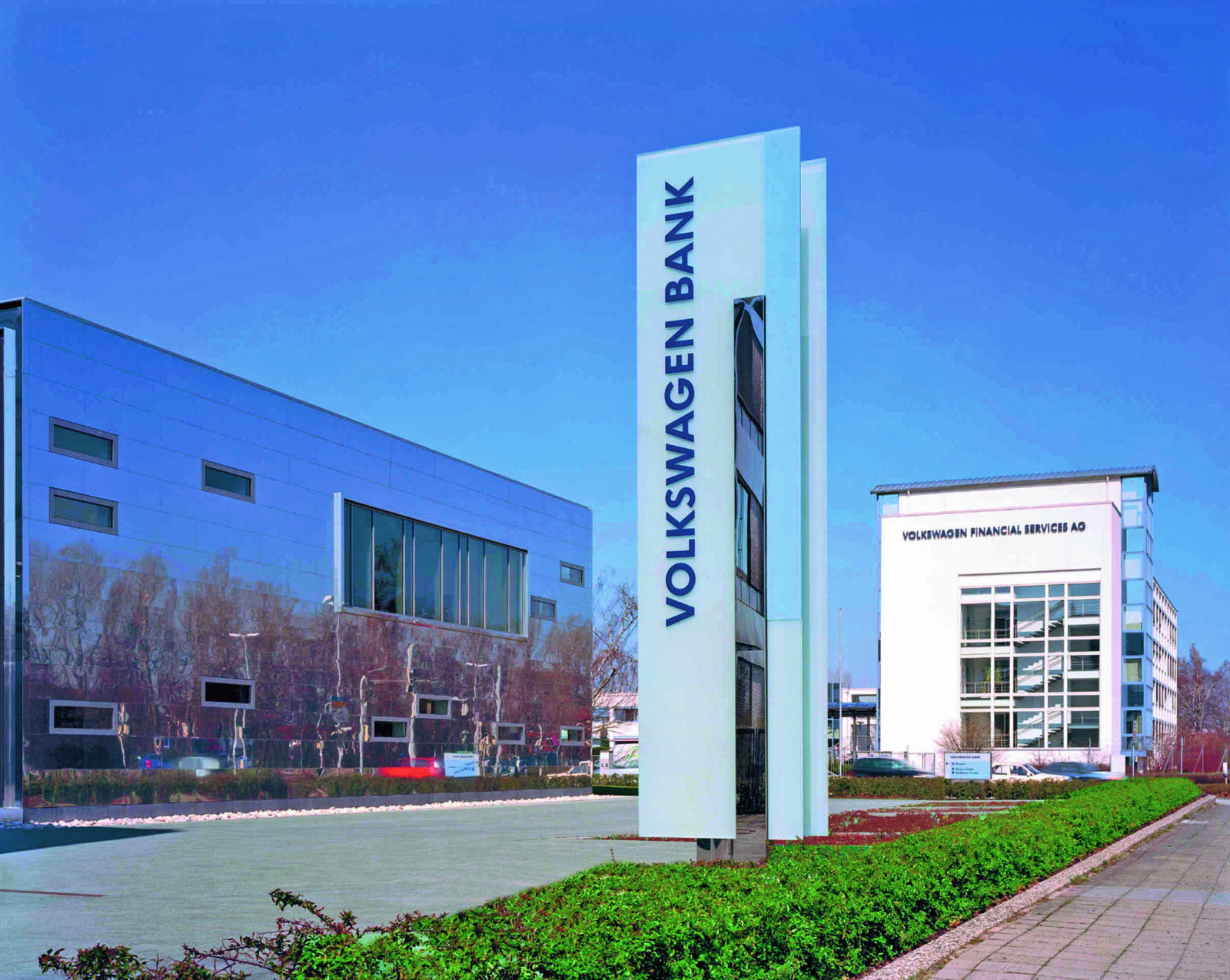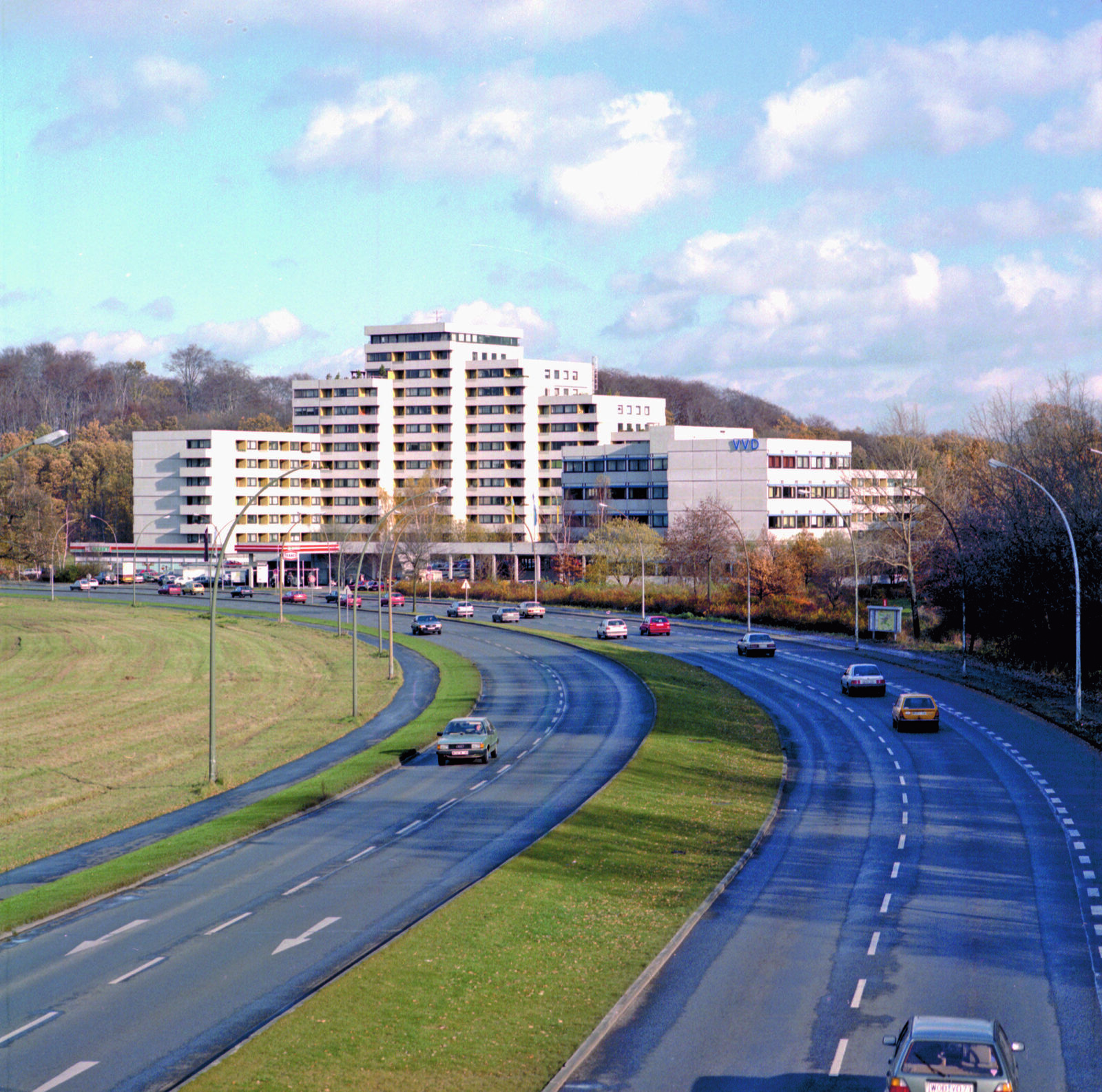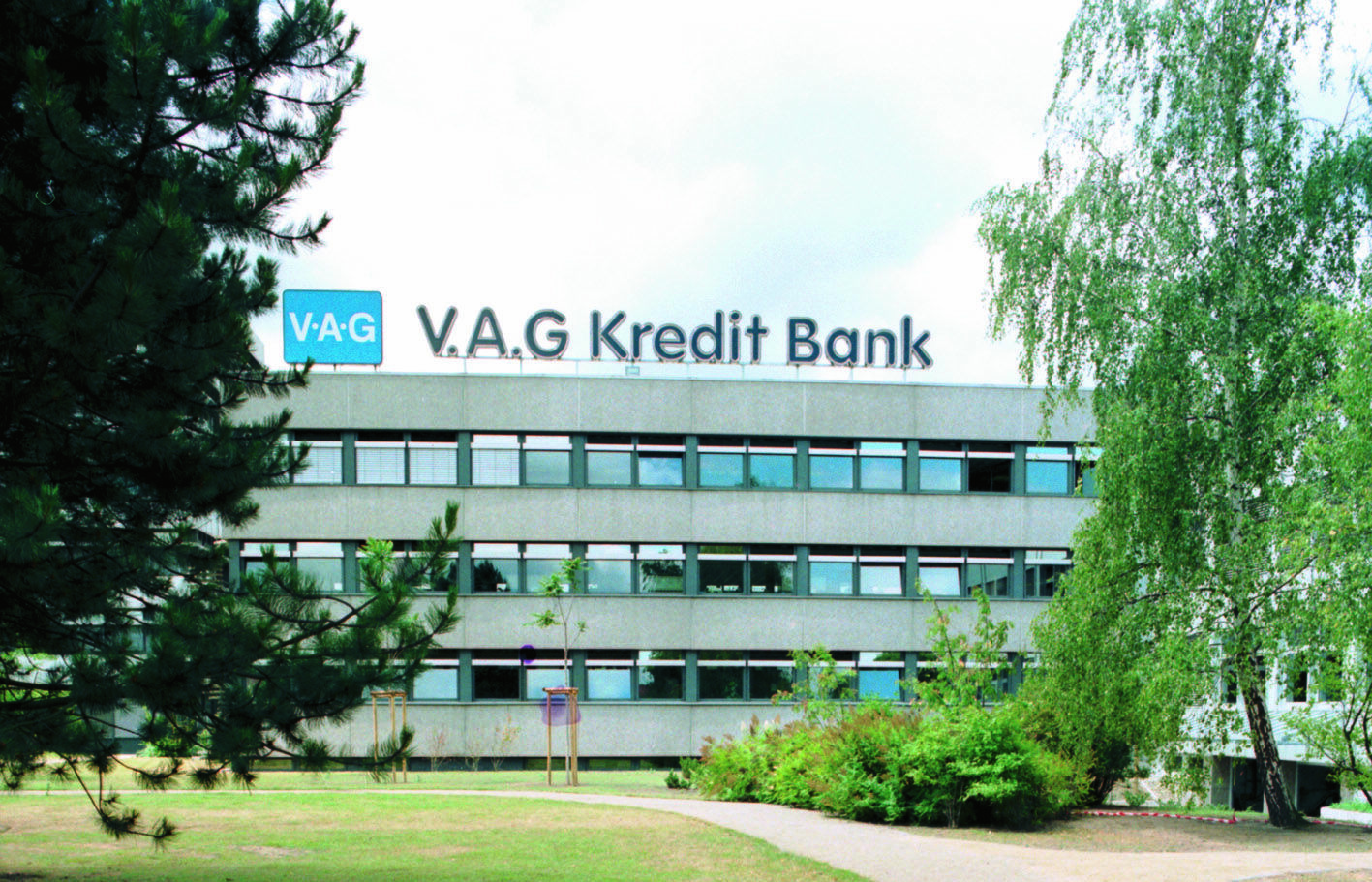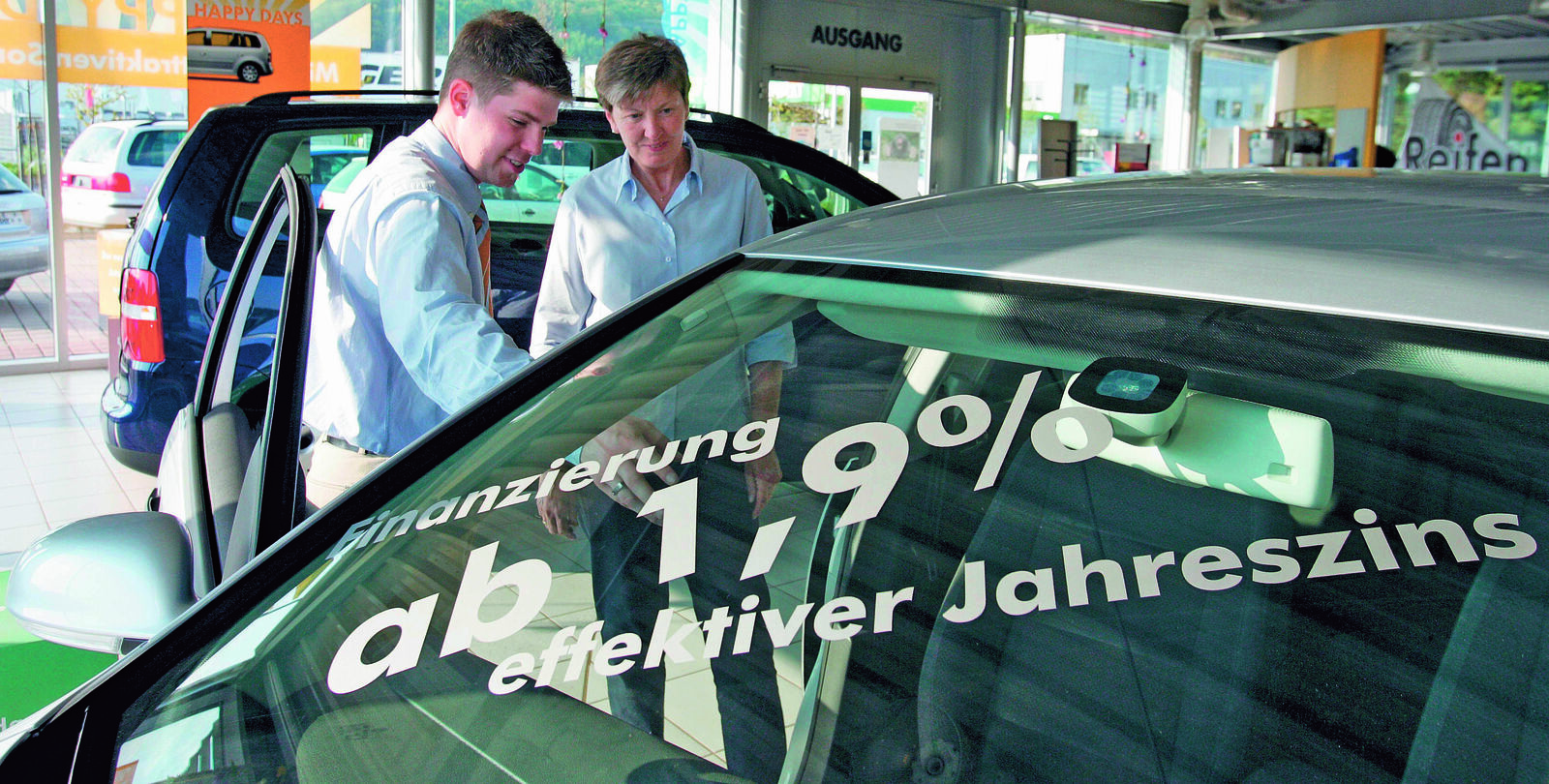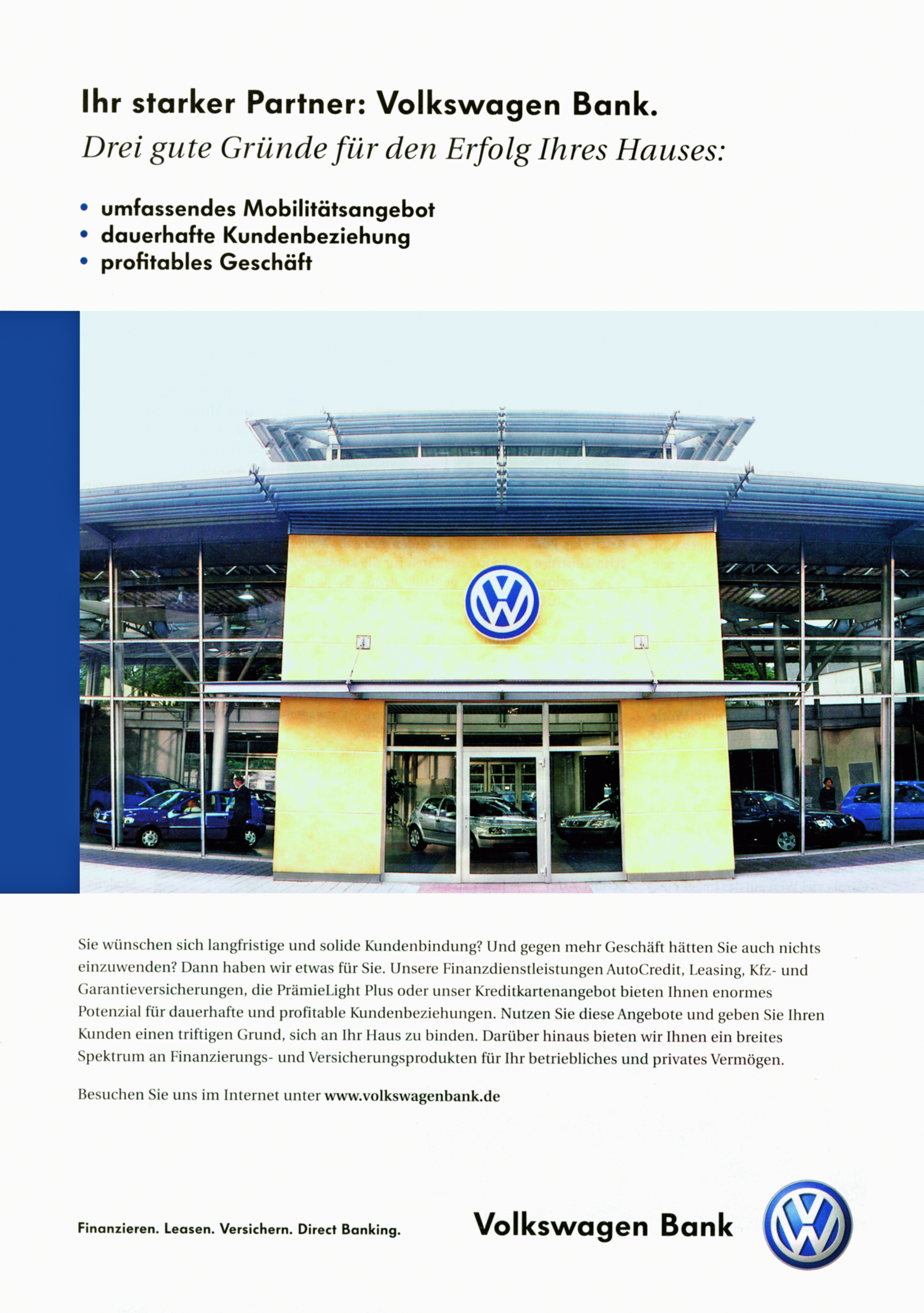Moreover, the know-how transfer and the standardisation of product offerings and marketing strategies brought the prospect of a rise in earning power. In 1994, VWFS with its workforce of 2,236 provided finance and leasing services in seven European countries: Germany, France, Spain, Italy, the Czech Republic, Slovakia and the UK. Germany accounted for three-quarters of the 663,000 vehicle finance agreements and 437,000 vehicle leases. In April 1999, VWFS added a third field of business to complement its automotive finance and leasing activities, taking over the insurance company Volkswagen Versicherungsdienst GmbH (VVD) which – like the other two business units – also boasted a long and successful history in its field.
VVD was founded on February 10, 1948 by notarial certification of the shareholders’ agreement, and was entered in the Register of Companies at the Fallersleben district court on February 28, 1948. Until then, the British-controlled Volkswagenwerk GmbH had produced almost exclusively for the Allies. Following Germany’s currency reform, military transport requirements were replaced by rapidly expanding demand among private customers. In consultation with the Volkswagen organisation, VVD, whose shares had been transferred to shareholder Christian Holler in October 1949, devised a low-cost automobile insurance package. This was extended and expanded over the years, and was marketed through Volkswagen dealer sales personnel, who were given ongoing training in insurance. The package of products and services designed to enhance customer loyalty was instrumental in ensuring the rapid expansion of VVD as the Beetle boom went from strength to strength. By 1961 VVD had issued its 500,000th policy. The company had a workforce of 323 as well as an efficient network of field agents with 12 branches in Germany and offices in Austria, Italy and the Netherlands. A further two subsidiaries were established in the UK and France in 1962. In the same year, VVD expanded its product range to include its “Europa-Schadendienst” Europe-wide accident repair cover, having arranged the direct settlement of claims with importers. Combined with the fast-track settlement of personal liability claims introduced in 1972, VVD now offered an unparalleled insurance service which guaranteed customers the swift and cashless settlement of claims through 2,400 service partners across Europe and brought VVD further growth. In 1982, VVD, with total premiums collected of some DM 400 million, was ranked ninth in a survey of 100 car insurers. By 1983, the number of vehicle insurance policies had passed the 600,000 mark, highlighting the importance of VVD to Volkswagen’s sales policy. The Volkswagen used car warranty underwritten by VVD introduced in 1983 further strengthened customer loyalty to authorised service centres. With low-cost premiums, refunds almost every year, the Europe-wide repair service and the close-knit field agency network, VVD remained a vital sales promotion instrument for the Volkswagen Group when it was integrated into VWFS at the end of the 1990s.


